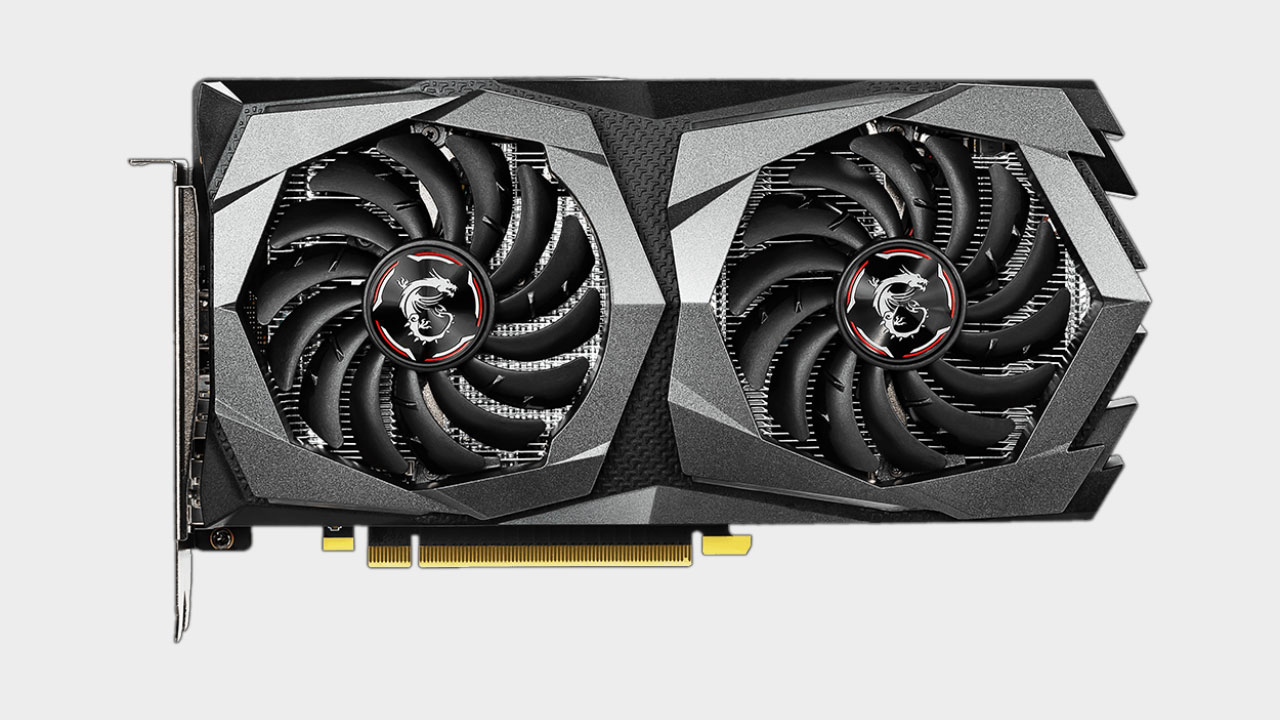Our Verdict
The GTX 1650 is the fastest 75W GPU around, if that's what you need, but it faces stiff competition from many other graphics cards.
For
- Over 50 percent faster than GTX 1050
- No extra power required on many models
- Great for small form factor builds
Against
- Costs more than the GTX 1050 it replaces
- Struggles in more demanding games
- Budget GPUs often aren't the best value
PC Gamer's got your back
The GeForce GTX 1650 was inevitable, considering none of the other Turing GPUs can fill the role of a budget version of the best graphics cards. This is likely the final implementation of the Turing architecture (at least on 12nm). The new TU117 chip means Nvidia now has everything from the extreme GeForce RTX 2080 Ti through the more reasonable RTX 2060 for ray tracing fans, with the GTX 1660 Ti and GTX 1660 dropping the RT and Tensor cores in favor of lower prices.
Architecture: TU117
Process: 12nm
Transistors: 4.7 billion
Die size: 200mm^2
SMs: 14
CUDA cores: 896
Base Clock: 1485MHz
Boost Clock: 1665MHz
VRAM: 4GB GDDR5
VRAM Speed: 8000Gbps
Bus width: 128-bit
ROPs: 32
TMUs: 56
GFLOPS: 2984
Bandwidth: 128GB/s
TDP: 75W
Launch Price: $149
The GTX 1650 uses a new TU117 GPU, which is a smaller and thus less expensive variant of the TU116 that powers the GTX 1660 and 1660 Ti cards. The key differences relative to the 1660 line are in the memory configuration and number of SMs (Streaming Multiprocessors), which in turn determines the number of CUDA cores, texture units, and ROPs. It's still built using TSMC's 12nm lithography, leaving 7nm for AMD's Radeon VII for now. The result is a die size that's about a third lower than the TU116, with 4.7 billion transistors.
As expected, the GTX 1650 has 4GB of GDDR5, clocked at 8GT/s—the same speed as the GTX 1660 as well as the previous generation GTX 1060 cards. Four active memory controllers on a 128-bit bus gives it 128GB/s of bandwidth, slightly more than the GTX 1050 Ti. It also has 32 ROPs (Render Outputs).
For the GPU core, TU117 and the GTX 1650 has 14 SMs, which means 896 CUDA cores and 56 texture units. As with all other Turing GPUs, the GTX 1650 can do concurrent FP32 and INT calculations, which can speed up gaming workloads anywhere from 15-35 percent (depending on the game), relative to the previous Pascal architecture. It's worth pointing out that the desktop 1650 doesn't use a fully enabled TU117 either, as there's a mobile variant with 16 SMs and 1024 CUDA cores, so we may see a GTX 1650 Ti in the future—in fact I'd count on it.
Nvidia is typically conservative with its reported boost clocks, with most cards running well above the given speed. The 'stock' GTX 1650 has a boost clock of 1665MHz, giving it 2984 GFLOPS of theoretical performance. That's less than the GTX 1060 cards, but roughly 50 percent faster than the GTX 1050. The GTX 1650 is also designed to run without a 6-pin PCIe power connector, though factory overclocked cards (like the MSI GTX 1650 Gaming X 4G that I'm using) have higher clockspeeds and require a 6-pin PEG connector.
Finally, the rumors on pricing ended up being a bit high, which is good news. With a recommended price of $149 for the base models, the GTX 1650 is only slightly more expensive than a GTX 1050 Ti. Well, that's the theory at least, but the 1050 Ti has lately been selling for $170 and up. Of course there's still room for a $179 GTX 1650 Ti part.
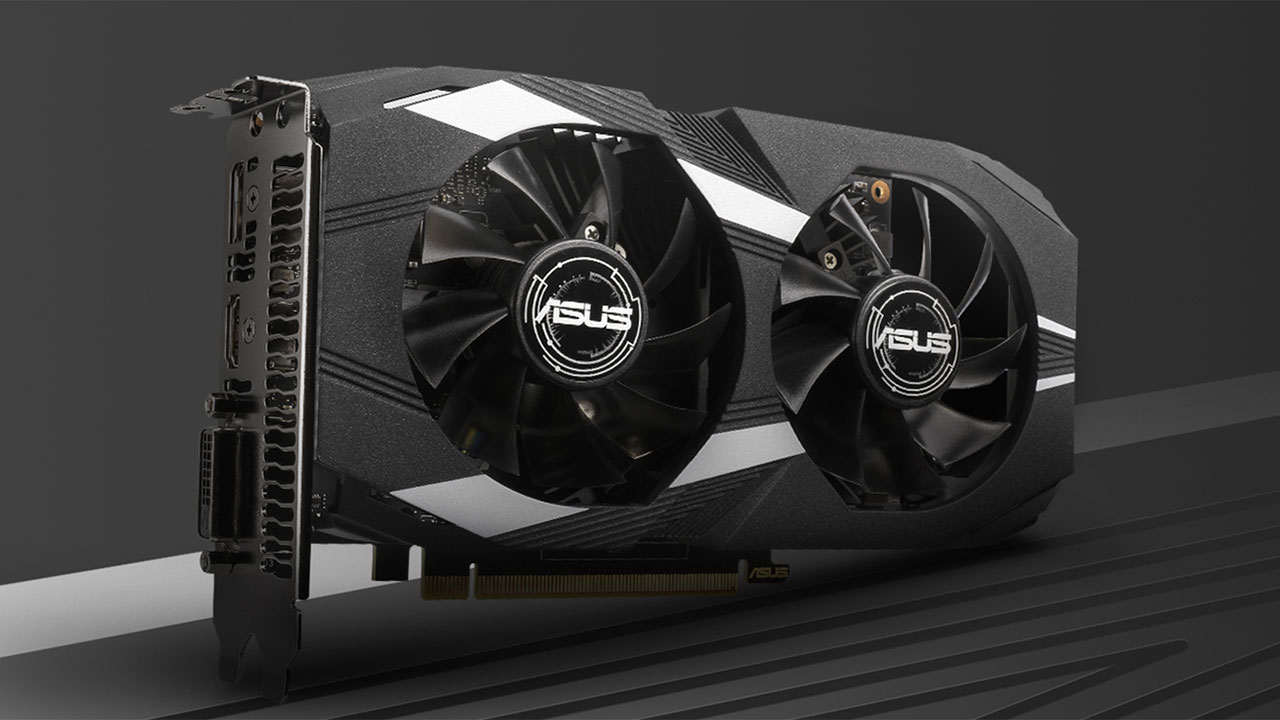
Factory overclocked models like the Asus and MSI cards I'm using for testing of course cost more than the base models. However, if you want something faster than a base GTX 1650, you should probably look at the GTX 1660 or AMD's RX 570/580, or even a previous generation GTX 1060. They require more power than the 1650, but any PSU with the required 6-pin connector should more than suffice.
GeForce GTX 1650 Performance
Nvidia claims the GTX 1650 will be up to twice as fast as a GTX 950 and 50 percent faster than the GTX 1050, and that's probably a fair estimate, especially since both of those cards only have 2GB VRAM. Given the specs, it should also be about 25-30 percent faster than the GTX 1050 Ti, but that also means it's likely slower than the GTX 1060 models.
The performance improvement comes from several changes. First, the 1650 has more memory bandwidth and CUDA cores compared with the 1050/1050 Ti. Second, it's clocked quite a bit higher. And third, the Turing architecture supports concurrent FP32 and INT calculations, which can boost performance another 10-30 percent over the Pascal GPUs (depending on the game and settings). But let's stop with the preamble and get to the actual performance results.
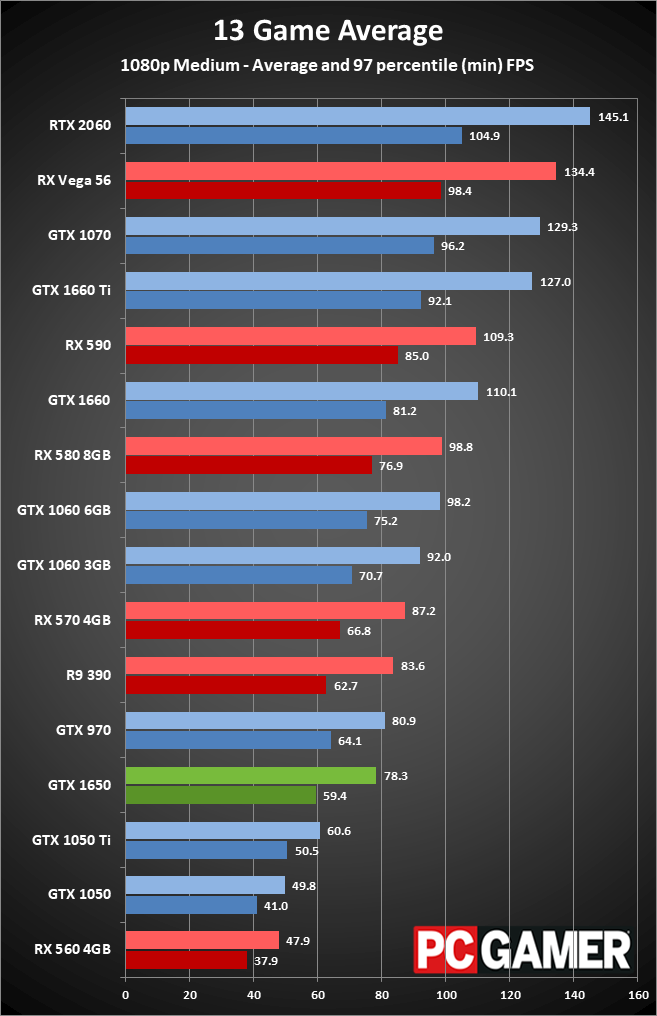
1080p medium testing - swipe left/right for additional charts.
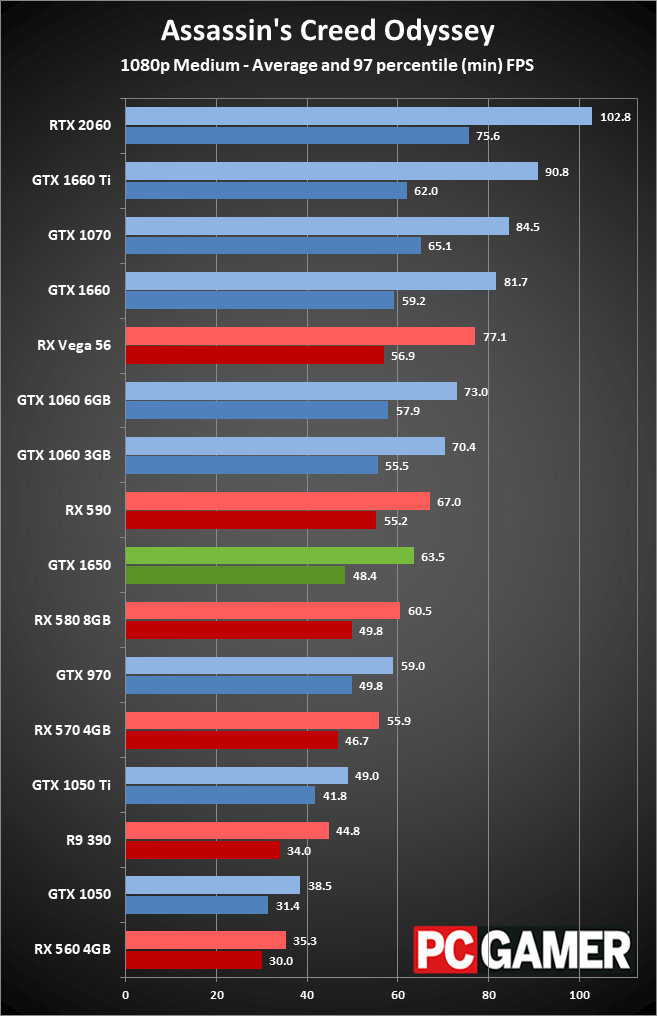
1080p medium testing - swipe left/right for additional charts.
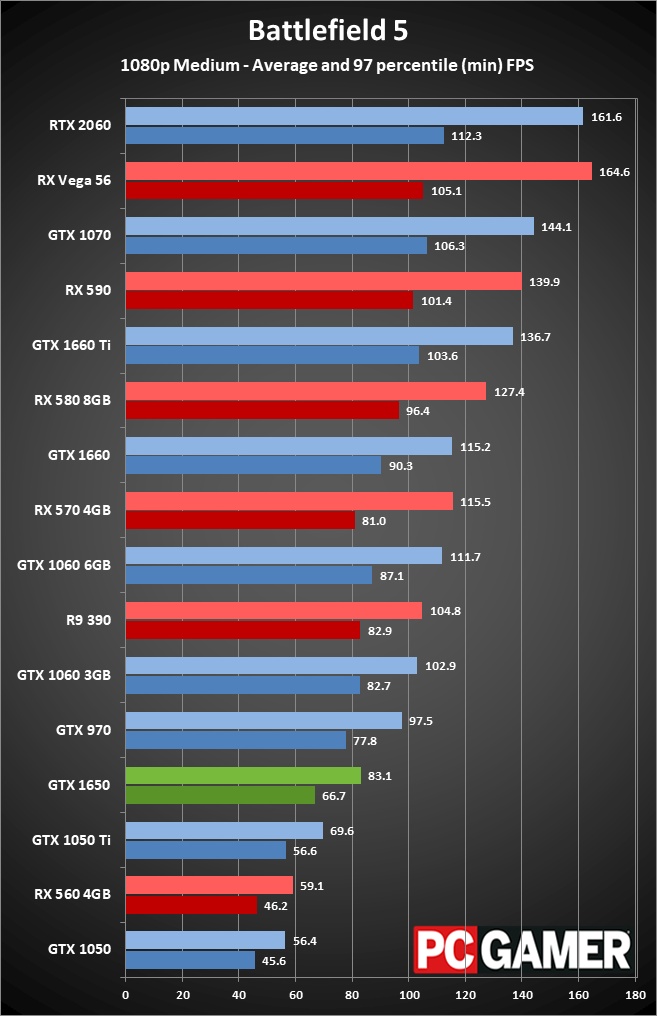
1080p medium testing - swipe left/right for additional charts.
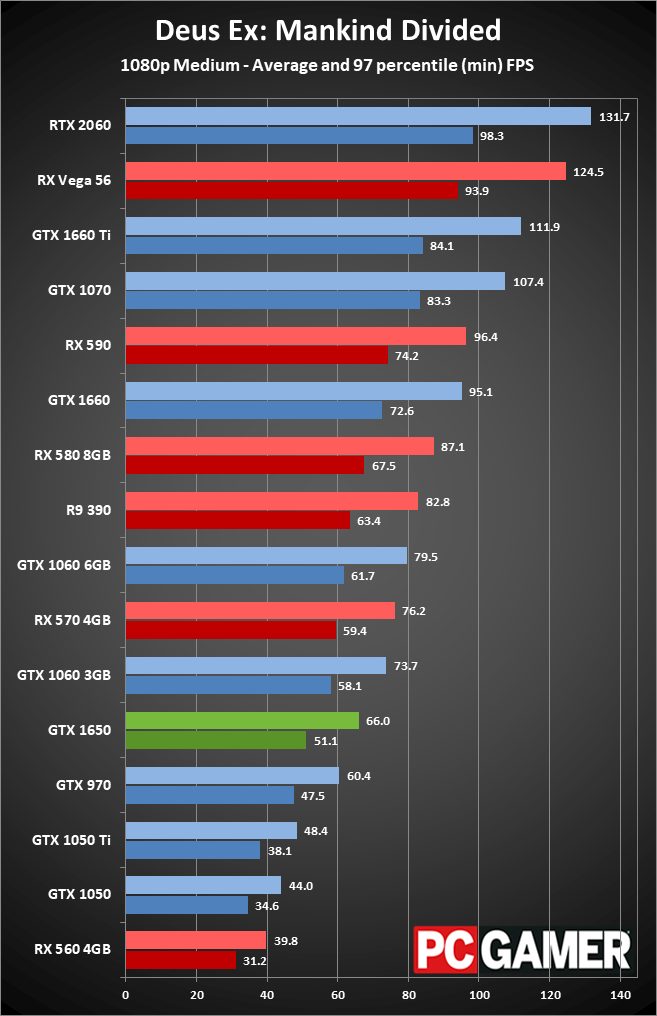
1080p medium testing - swipe left/right for additional charts.
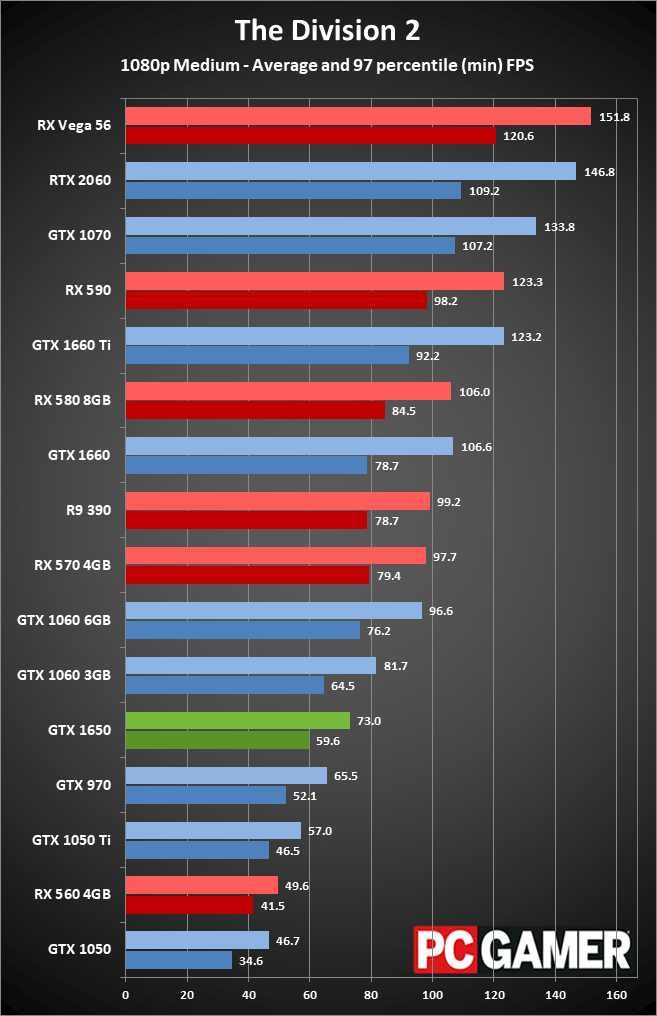
1080p medium testing - swipe left/right for additional charts.
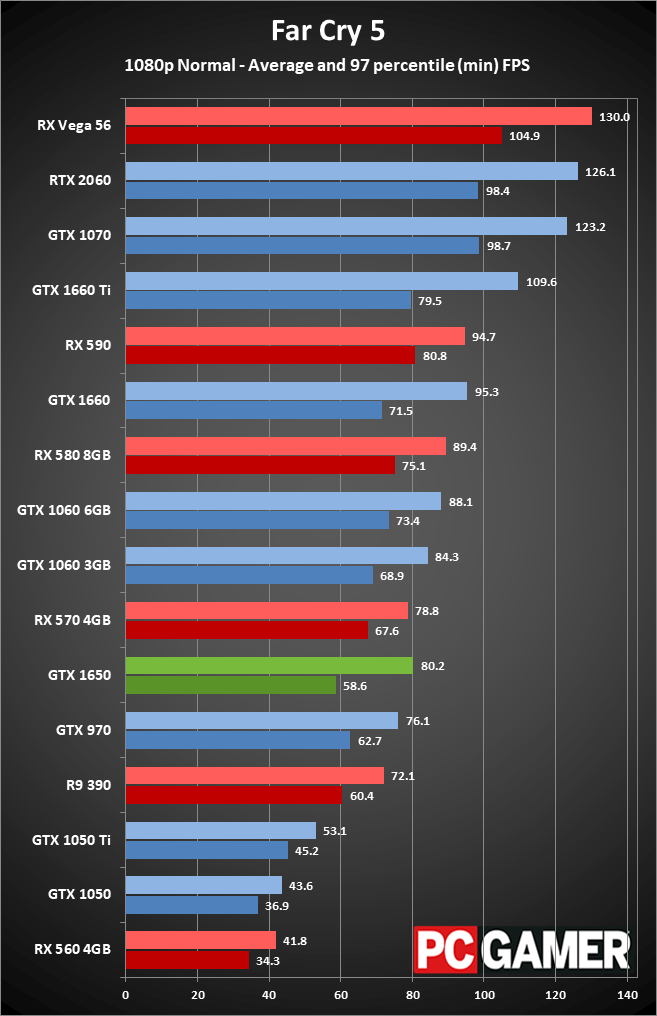
1080p medium testing - swipe left/right for additional charts.
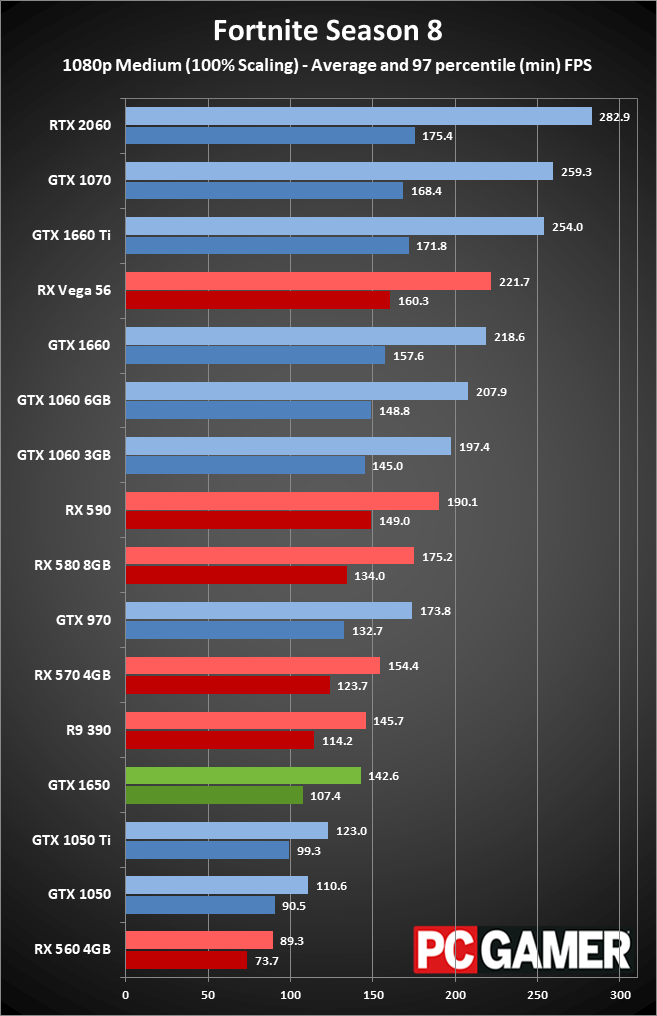
1080p medium testing - swipe left/right for additional charts.
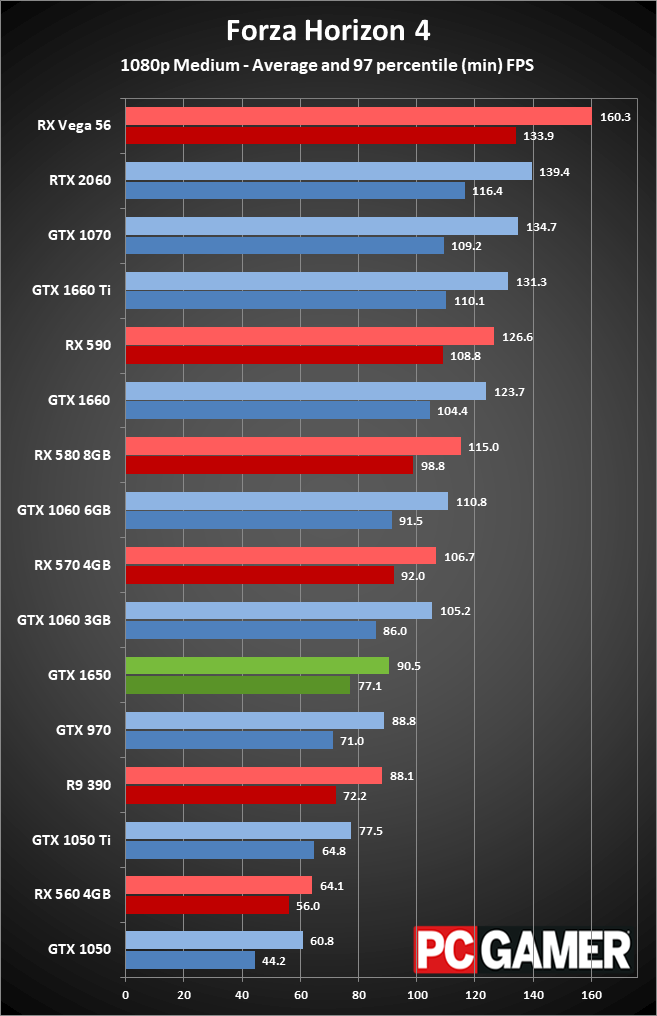
1080p medium testing - swipe left/right for additional charts.
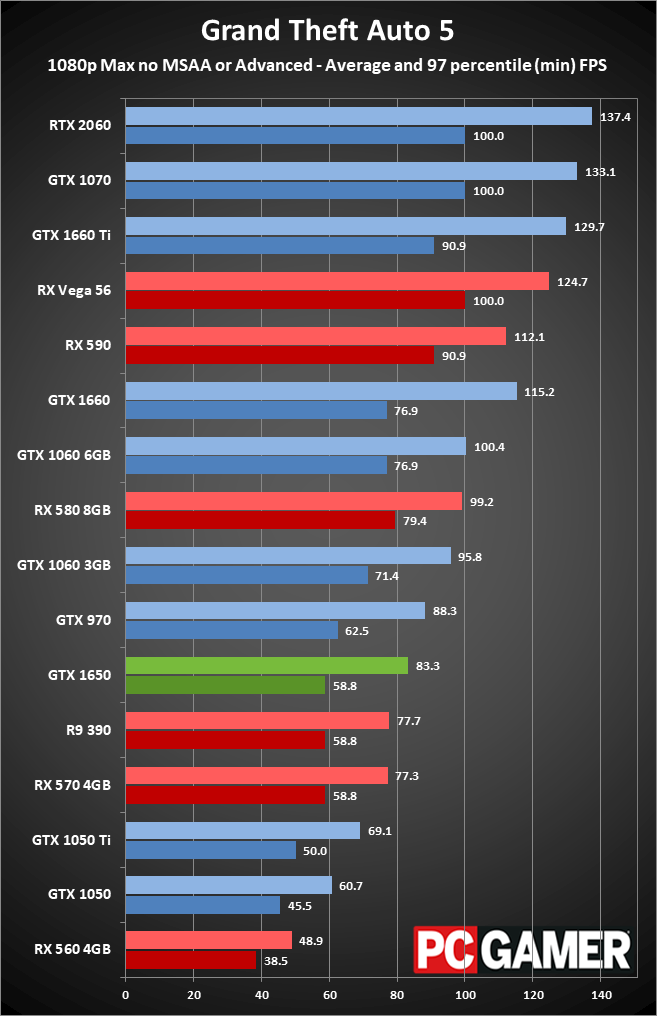
1080p medium testing - swipe left/right for additional charts.
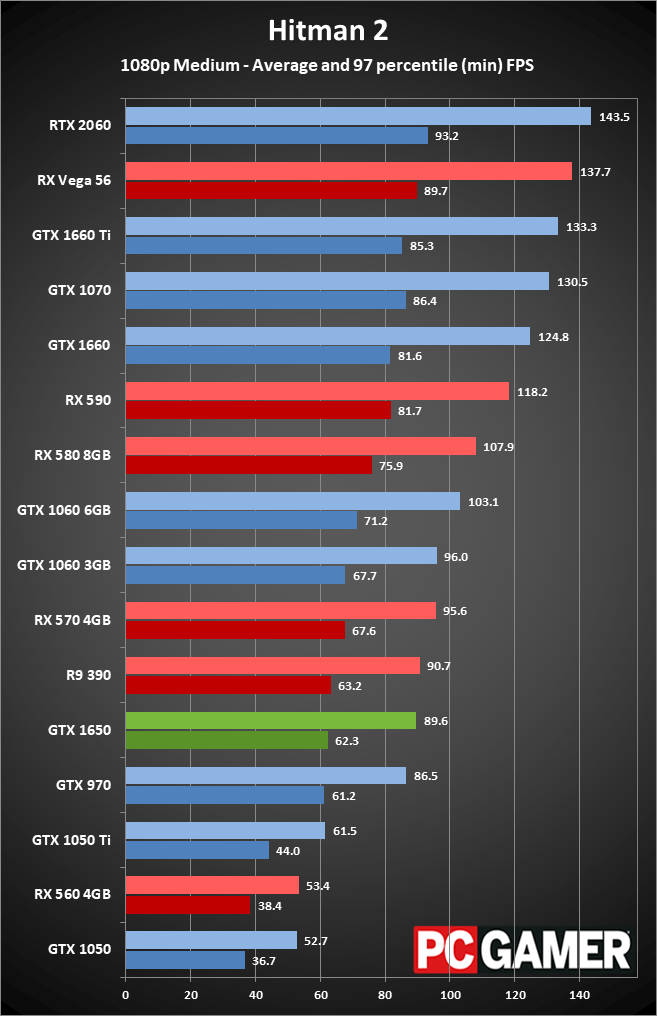
1080p medium testing - swipe left/right for additional charts.
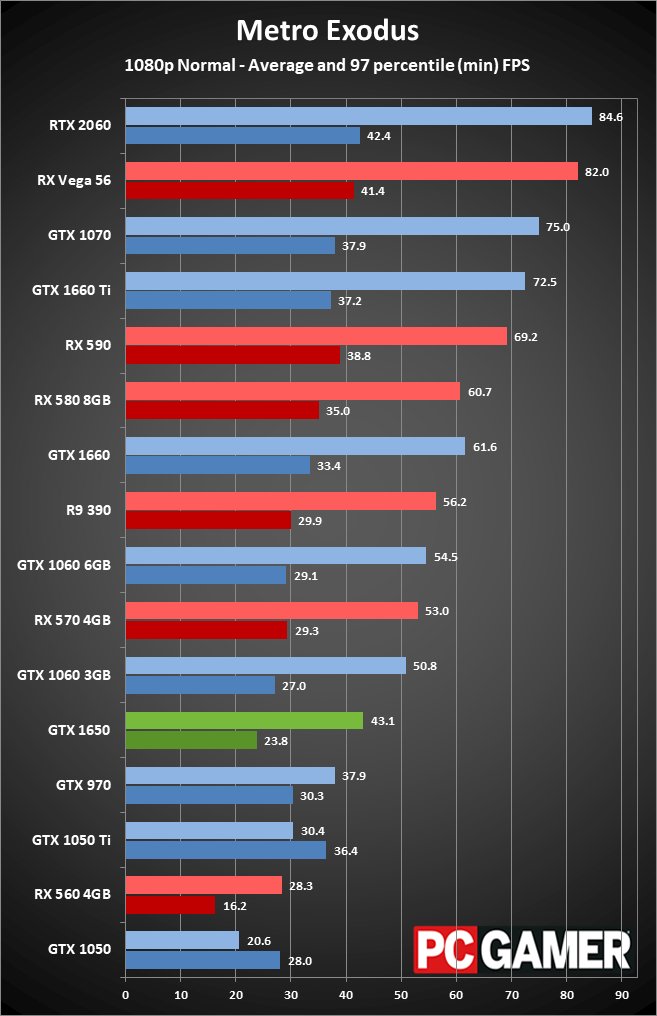
1080p medium testing - swipe left/right for additional charts.
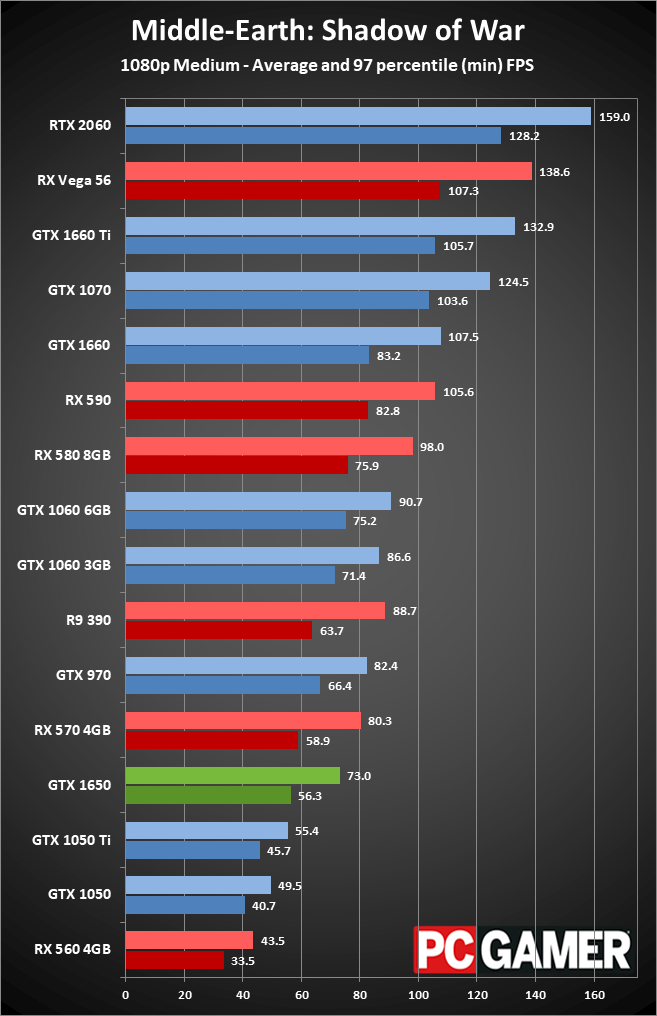
1080p medium testing - swipe left/right for additional charts.
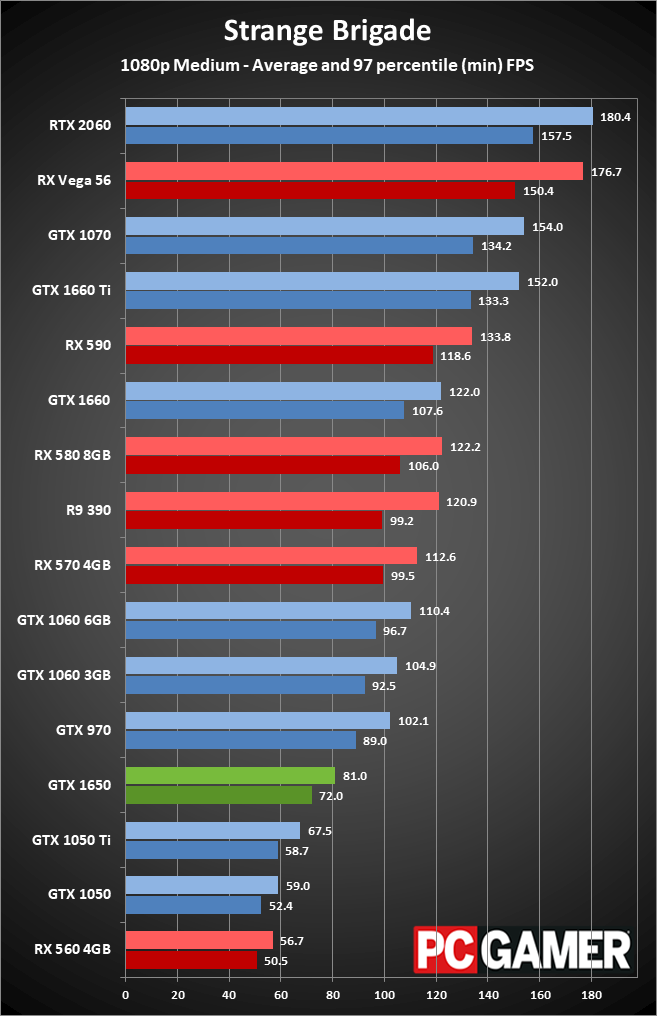
1080p medium testing - swipe left/right for additional charts.
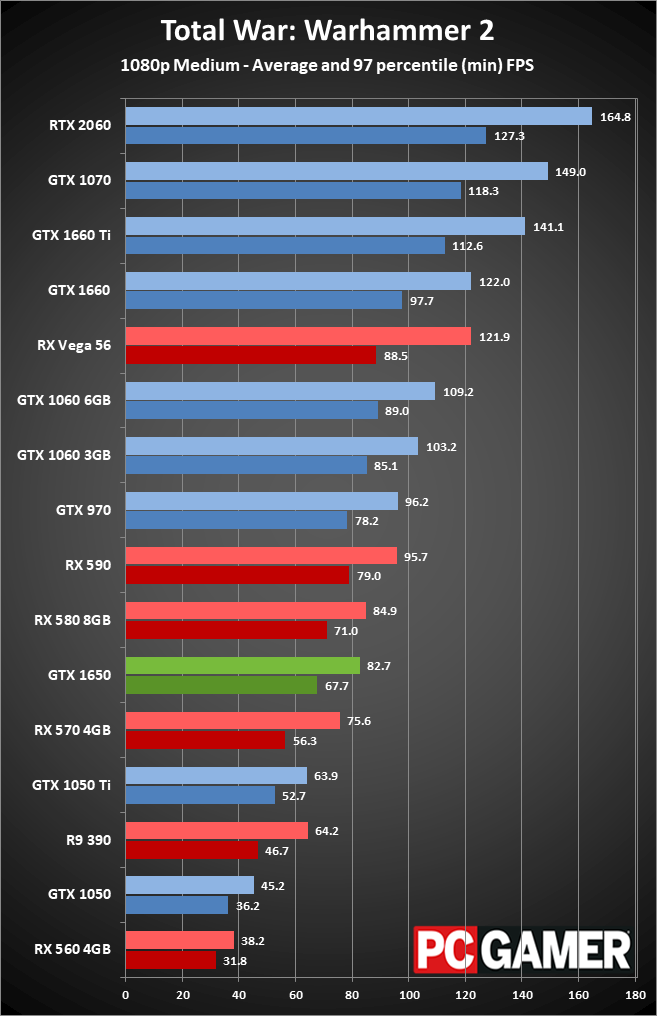
1080p medium testing - swipe left/right for additional charts.

1080p 'ultra' testing - swipe left/right for additional charts.
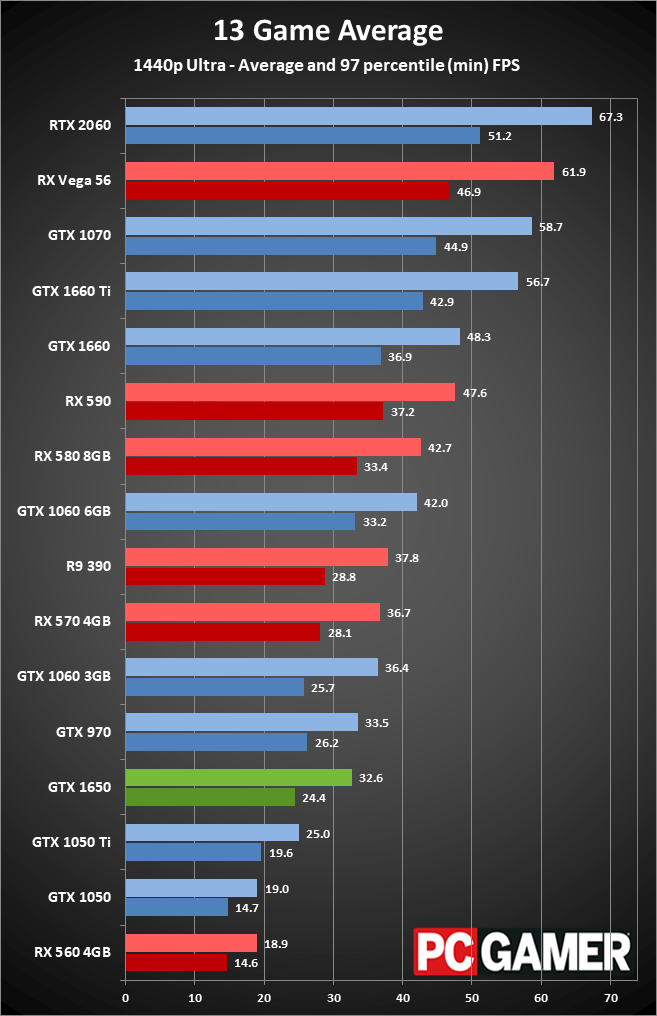
1440p 'ultra' testing - swipe left/right for additional charts.
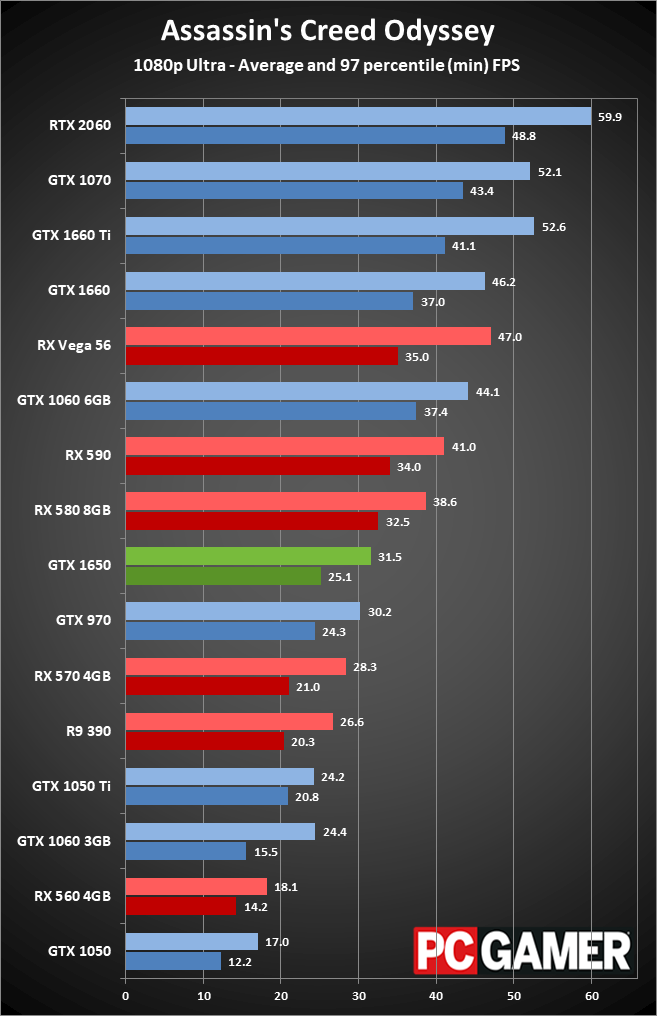
1080p 'ultra' testing - swipe left/right for additional charts.
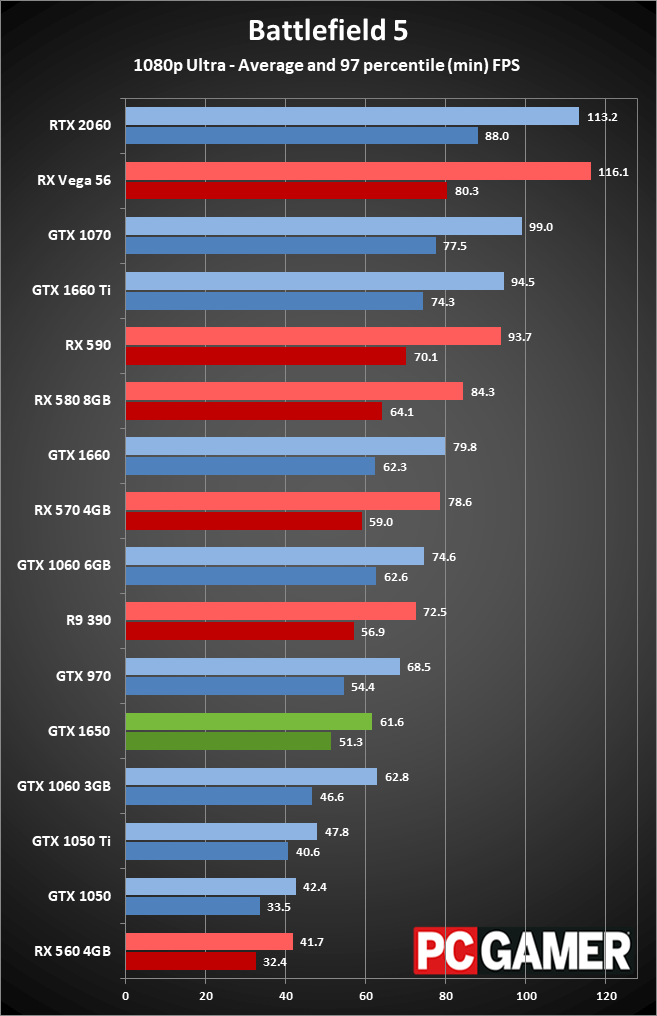
1080p 'ultra' testing - swipe left/right for additional charts.
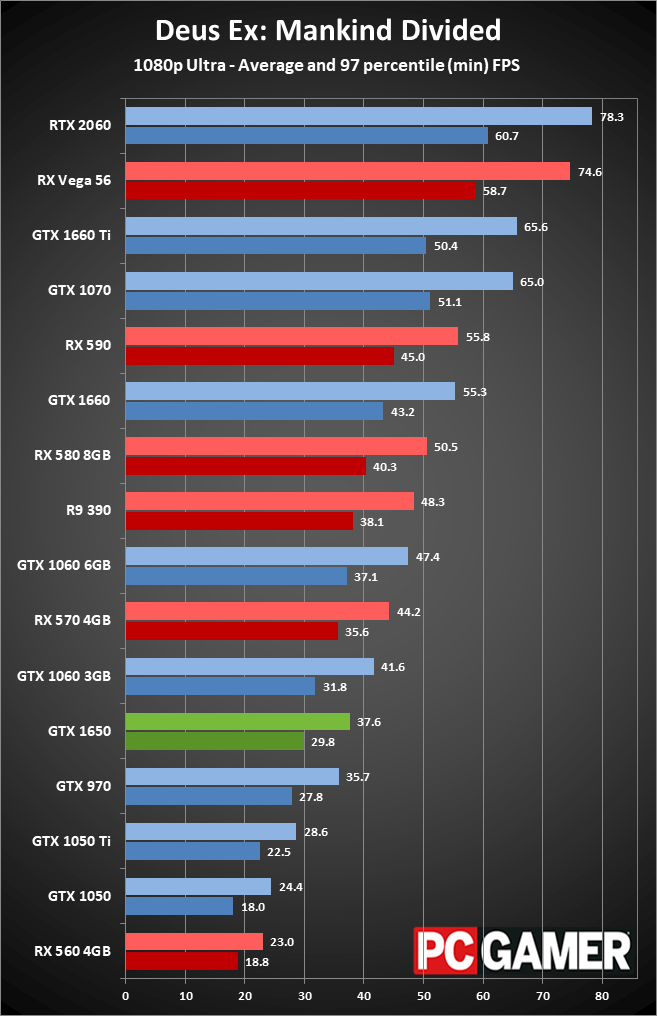
1080p 'ultra' testing - swipe left/right for additional charts.
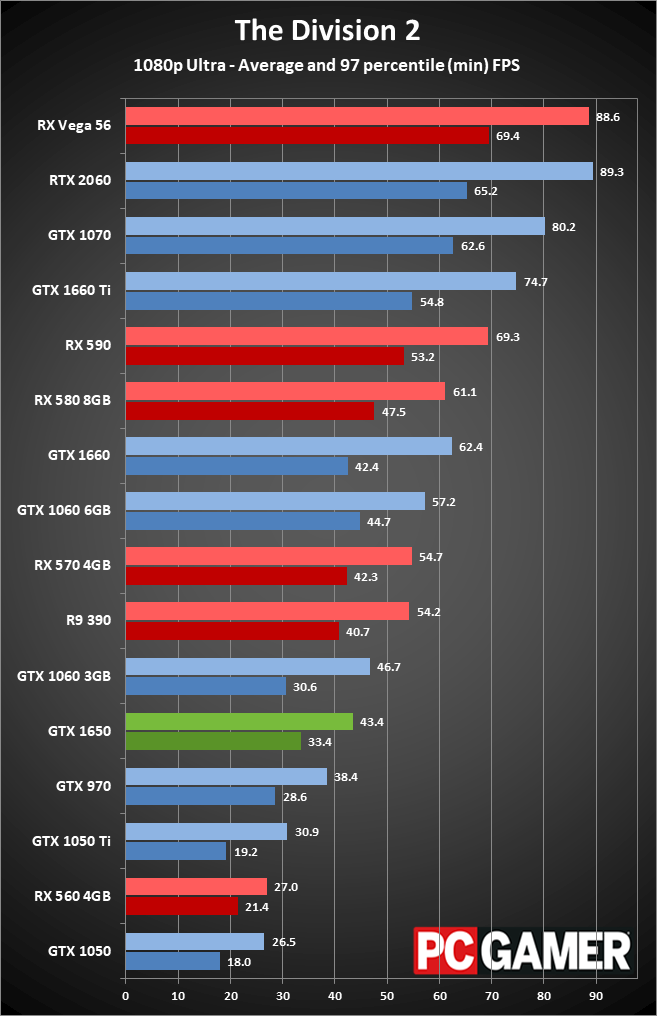
1080p 'ultra' testing - swipe left/right for additional charts.
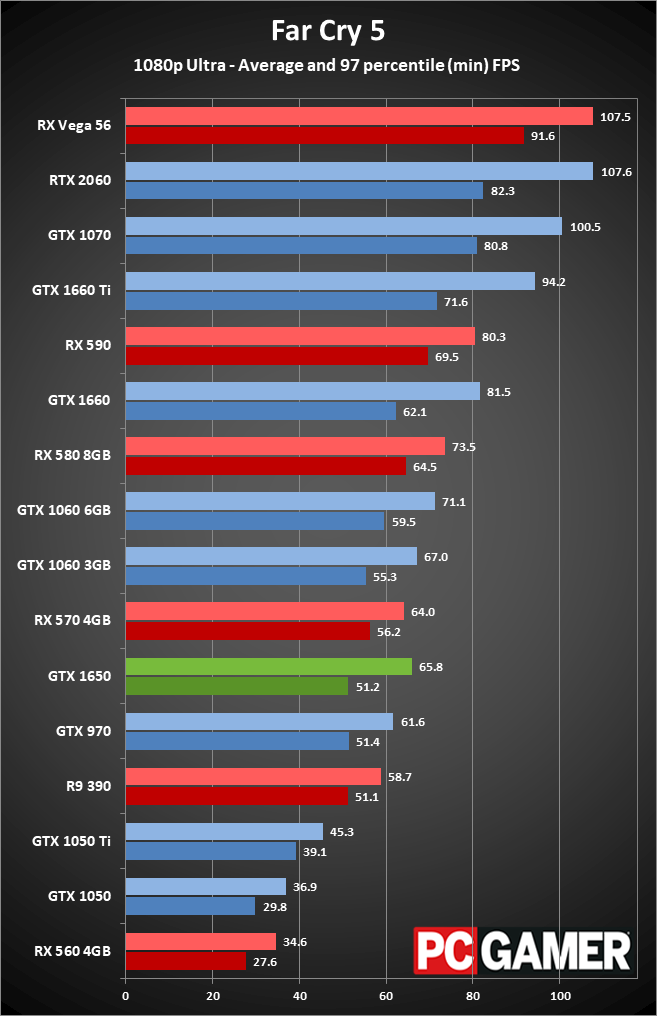
1080p 'ultra' testing - swipe left/right for additional charts.
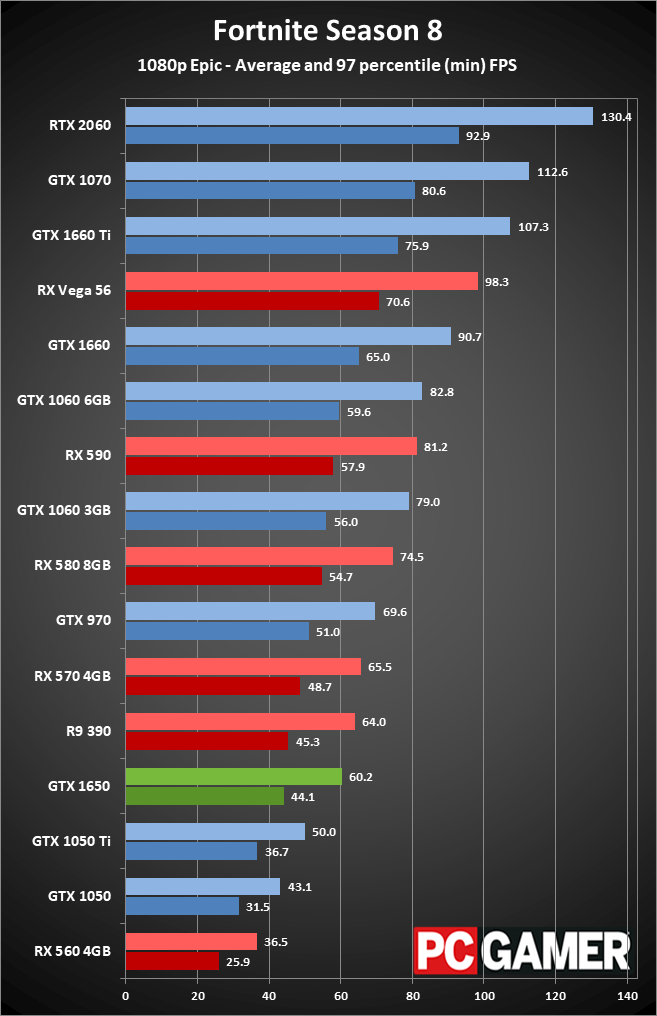
1080p 'ultra' testing - swipe left/right for additional charts.
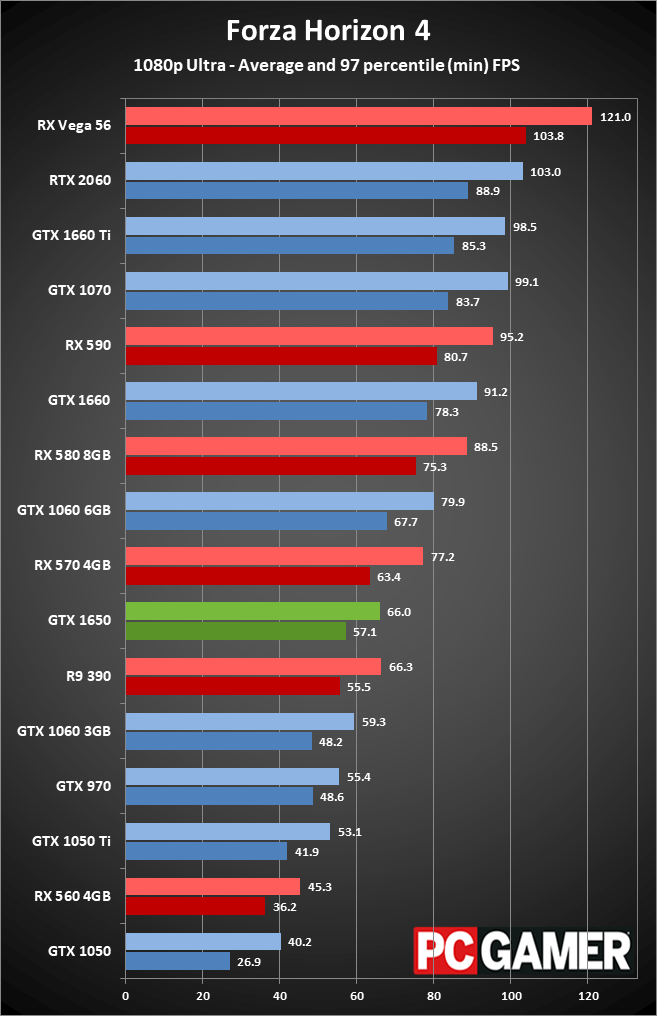
1080p 'ultra' testing - swipe left/right for additional charts.
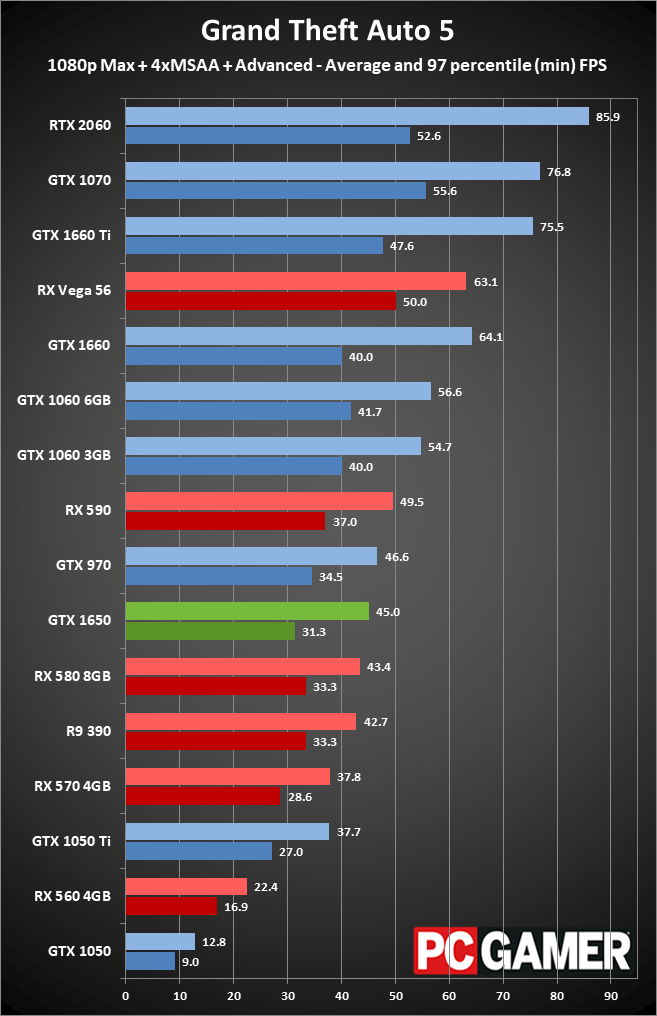
1080p 'ultra' testing - swipe left/right for additional charts.
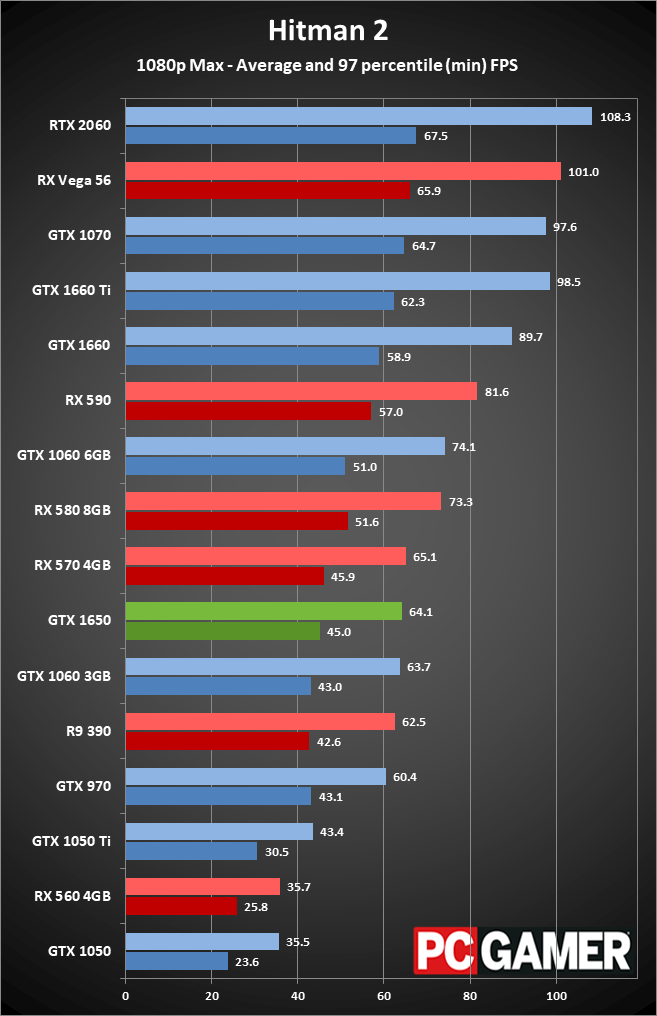
1080p 'ultra' testing - swipe left/right for additional charts.
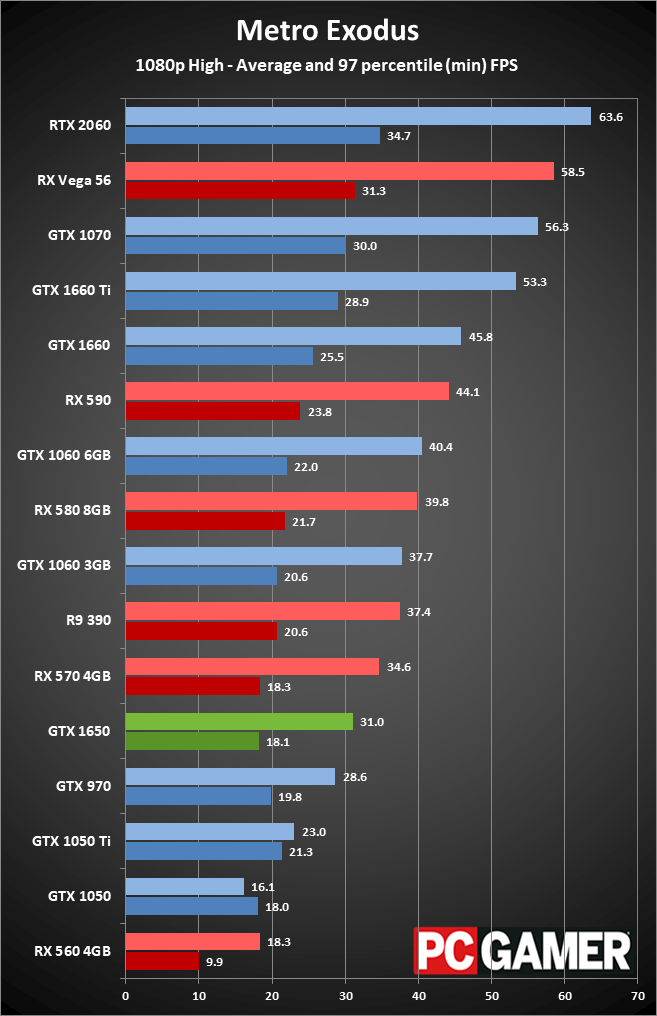
1080p 'ultra' testing - swipe left/right for additional charts.
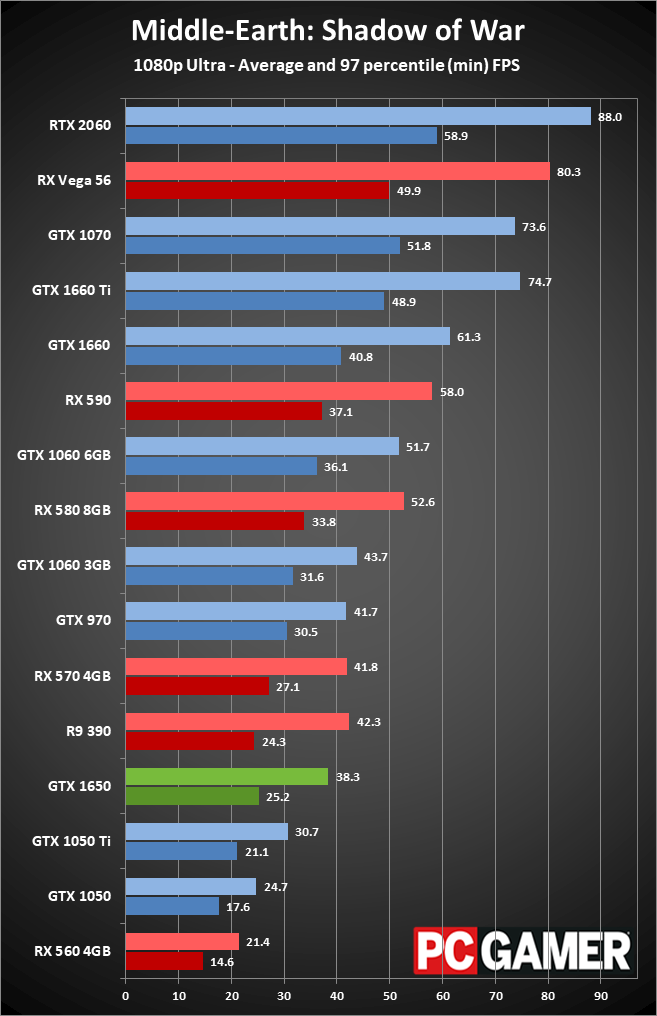
1080p 'ultra' testing - swipe left/right for additional charts.
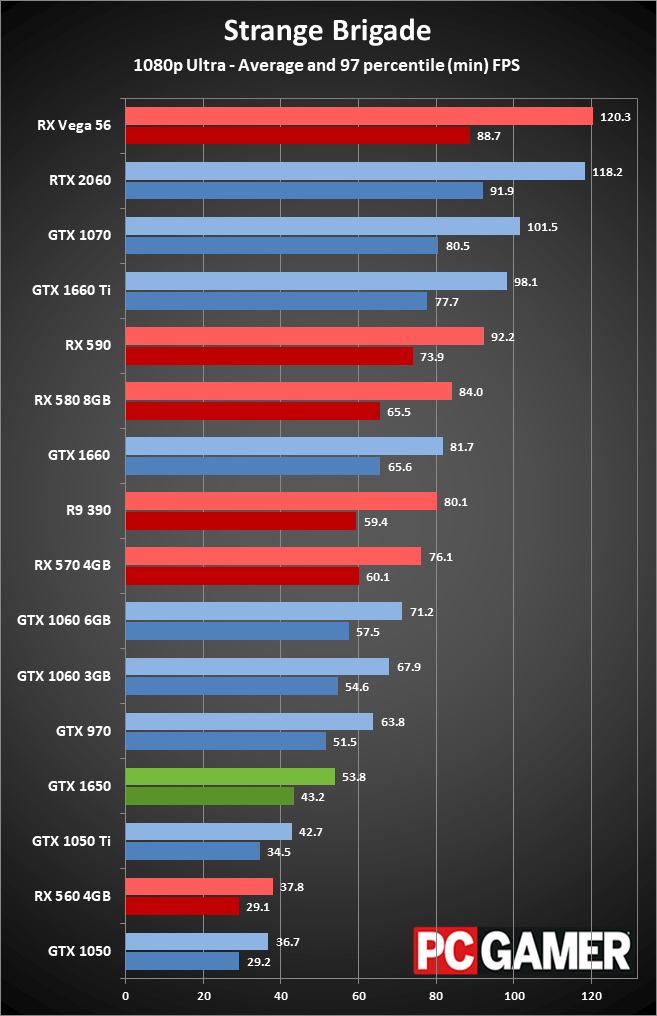
1080p 'ultra' testing - swipe left/right for additional charts.
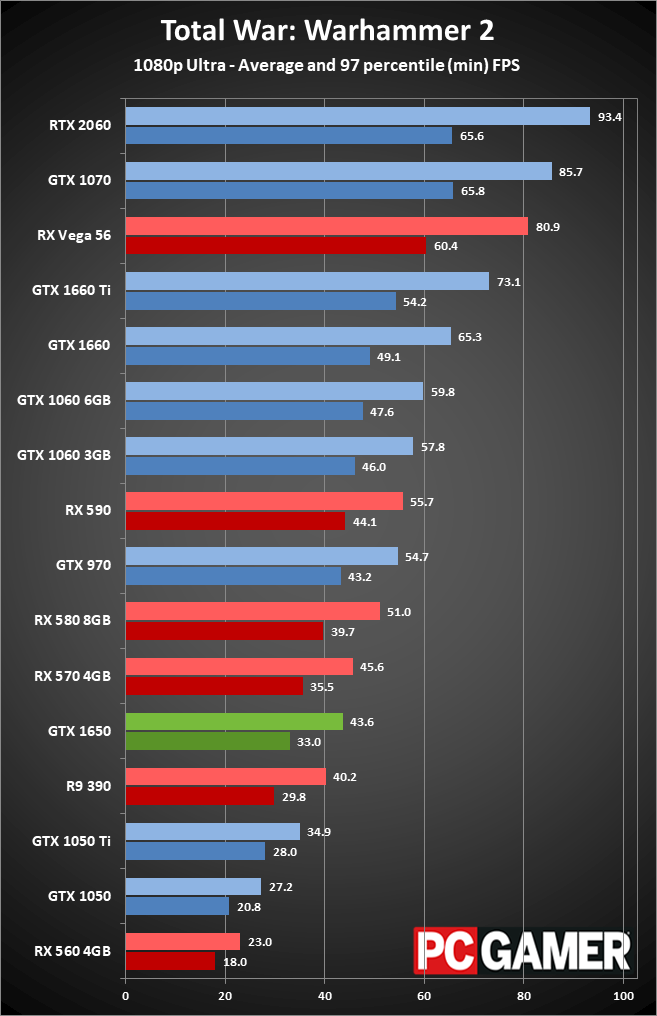
1080p 'ultra' testing - swipe left/right for additional charts.
Overall, the GTX 1650 lands right about where expected. It's clearly faster than the GTX 1050, by 57 percent at 1080p medium and 73 percent at 1080p ultra in my testing. Again, a lot of that is due to the 1050's limited VRAM, as the GTX 1050 Ti is much closer—the 1650 is about 30 percent faster. The GTX 1060 3GB meanwhile leads by 17 percent at 1080p medium and 9 percent at 1080p ultra, and the RX 570 4GB is in a similar position.
Another point of interest: 2014's GTX 970 is only slightly faster (1-3 percent on average) than the GTX 1650, mostly due to improvements in architecture over the past two generations. Newer games tend to favor the GTX 1650, while older games are more likely to favor the GTX 970.
In other words, a high-end 145W $330 card from 4.5 years ago has morphed into a budget 75W $150 card of today. That sounds pretty good, though it definitely represents a slowing down of performance increases. 4.5 years before the GTX 970, Nvidia launched the GTX 470. The GTX 970 was up to three times as fast.
Of course, there's also the caveat that my testing has used a rather heavily overclocked MSI GTX 1650 Gaming X 4G (1860MHz boost vs. 1665MHz reference). GTX 1650 cards priced at Nvidia's recommended $149 price have boost clocks in the 1665-1750MHz range by comparison, which means about 5-10 percent lower performance.
The GeForce GTX 1650 value proposition

US GPU value - swipe left for Europe, right for UK
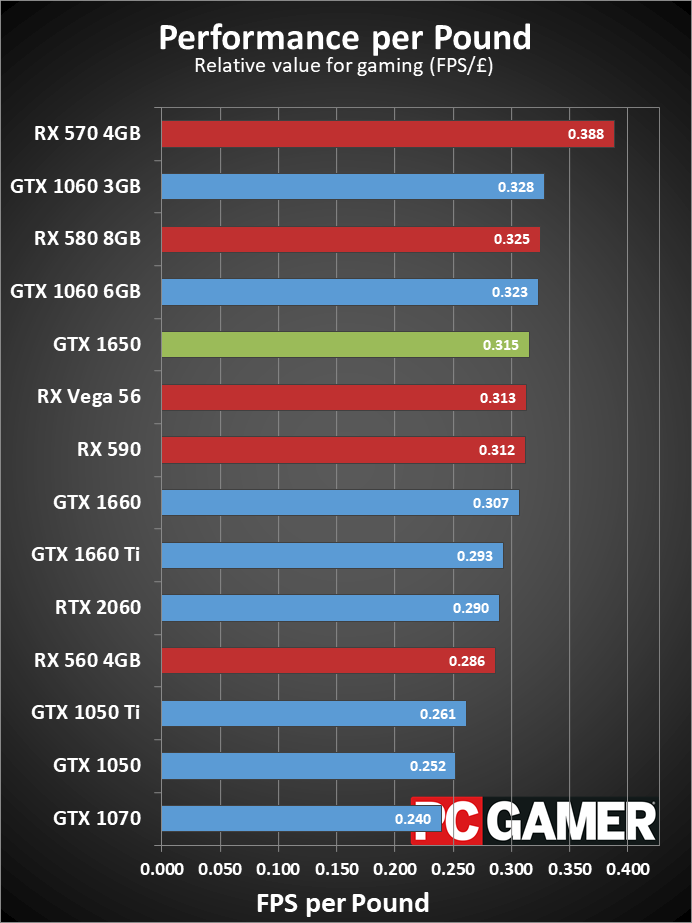
UK GPU value - swipe left for US, right for Europe
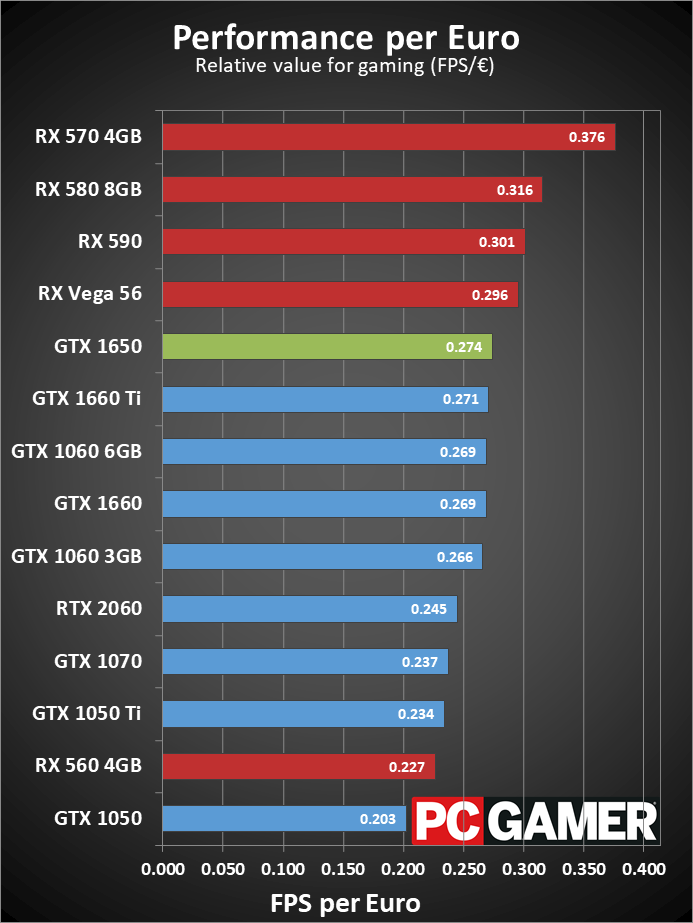
German GPU value - swipe left for UK, right for US
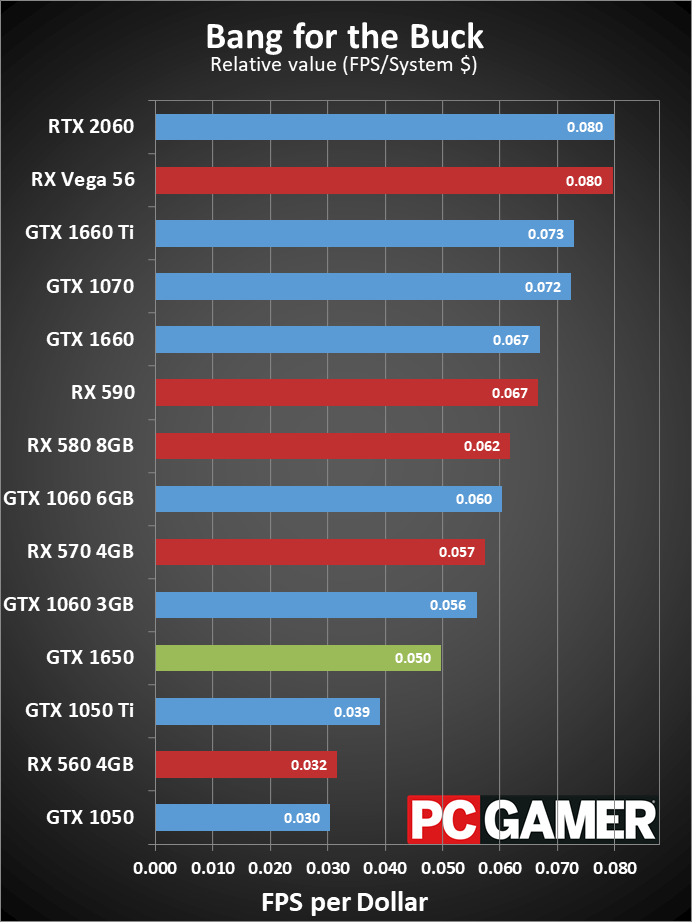
US system value - swipe left for Europe, right for UK
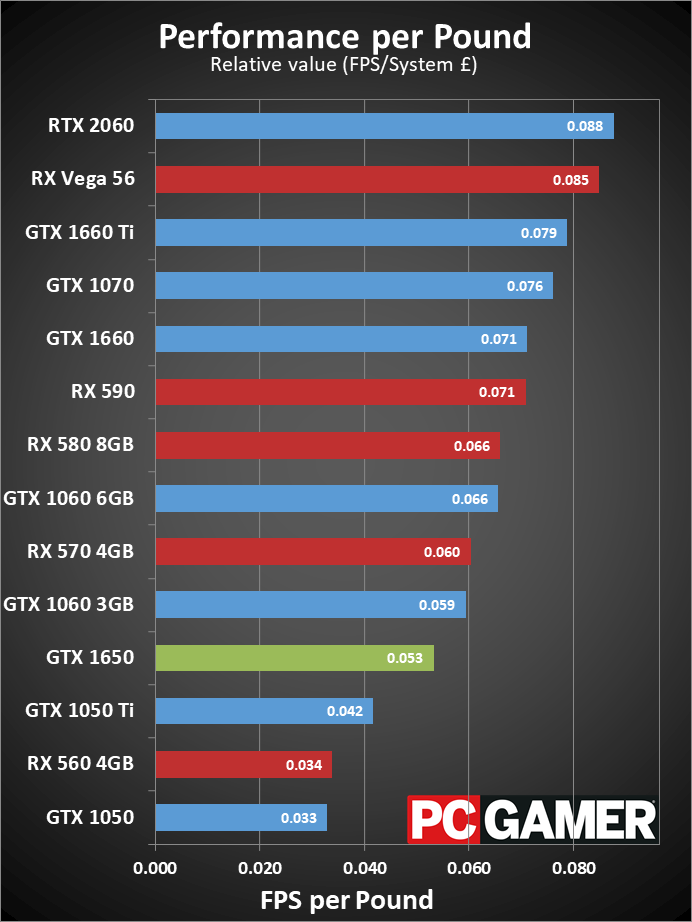
UK system value - swipe left for US, right for Europe
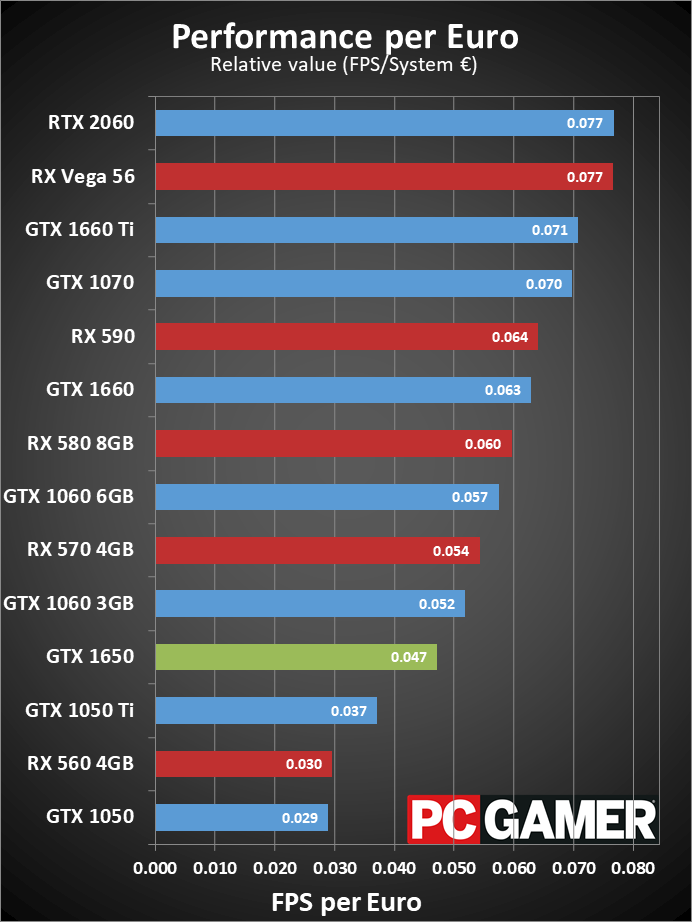
German system value - swipe left for UK, right for US
Wrapping up the charts, above are two different views of performance per monetary unit (using Germany for Euro pricing, if you're wondering). I've calculated "value" for these midrange, budget, and select high-end models using the best available pricing as of April 23. Prices do fluctuate, but most of these graphics cards are readily available at the prices used.
It's interesting that in the US and UK, Nvidia's 1060 3GB is priced very aggressively, while in Europe the new GTX 1650 ends up as the best Nvidia value right now. But regardless of market, if you're just looking at bang for the buck, AMD's RX 570 4GB can't be beat. I keep expecting inventory of that card to dry up, leading to higher prices, but it's been at or below $130 since the beginning of 2019. The only thing likely to remove RX 570 (and 580) from the market will be when AMD starts shipping Navi, currently rumored for July 7, but we'll have to wait and see.
The problem is that GPUs don't exist in a vacuum. If you're building a gaming PC, all of the other parts add to the cost. I've used a midrange priced build (around $725, not including the GPU) to calculate the overall gaming value of each GPU for the entire PC, and the faster graphics cards end up being far better recommendations from that perspective.
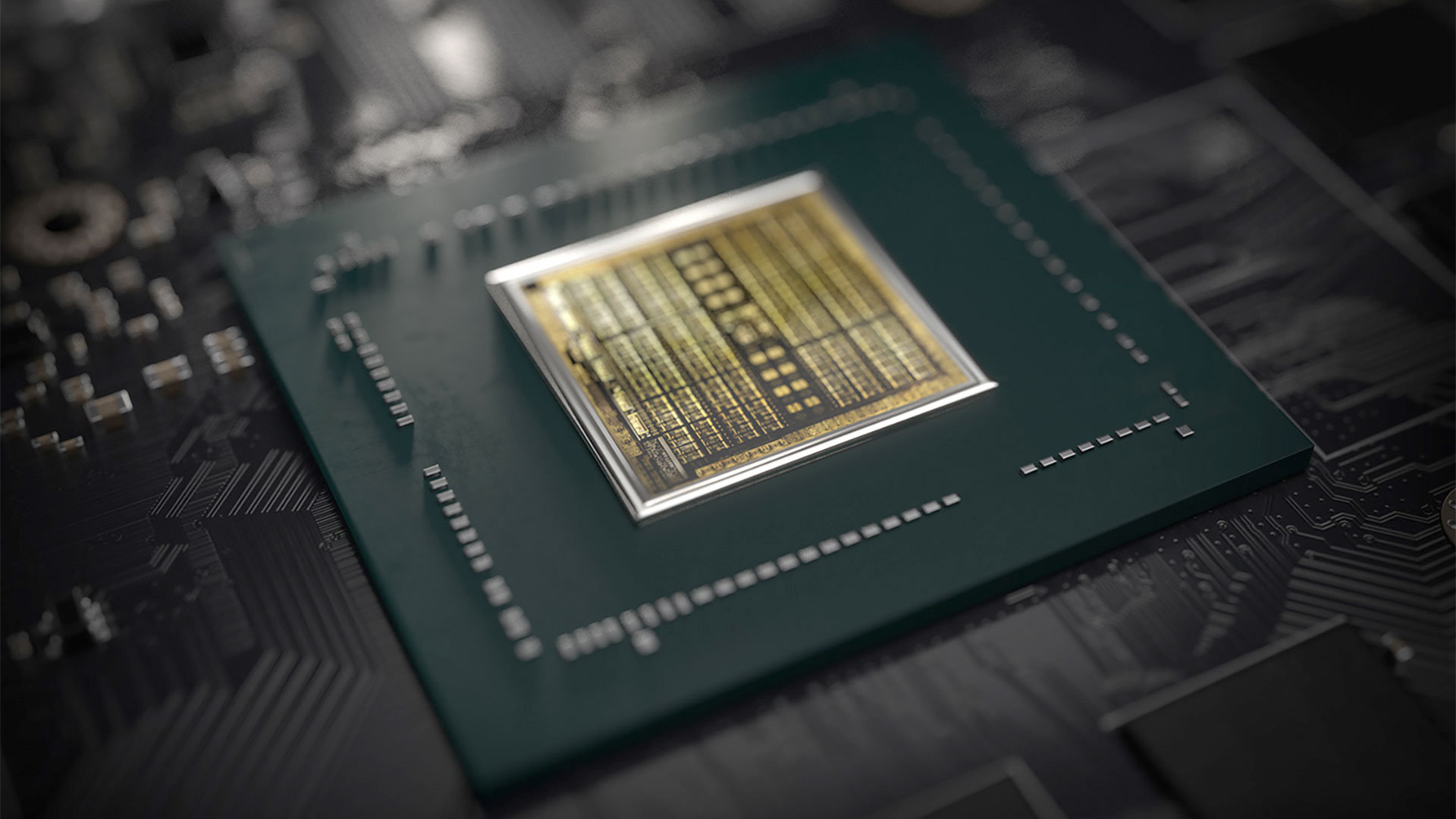
GTX 1650 only has previous gen NVENC
One piece of news that has surfaced after the initial GTX 1650 launch is that the new Turing TU117 GPU it uses does not contain the updated Turing NVENC block and instead uses the Volta version (which is basically the same as the Pascal version). What's NVENC used for? It handles encoding of video, for streaming, Nvidia ShadowPlay, and Nvidia Highlights. With Turing, Nvidia has touted the improved quality and performance of NVENC, saying it's now better quality than the x264 Fast setting many streamers use, while also being about 15 percent faster than Pascal and Volta's NVENC.
It's not a major loss, as people using a budget GPU are less likely to do streaming, but it's more than a little odd. How many transistors were shaved off the die size by omitting the newer NVENC? Possibly a couple hundred million at most, but that's only a 2-4 percent increase in die size. It speaks to the constraints that budget GPUs have to work in, however, where every penny counts.
The Volta NVENC block isn't bad, and it can likely handle any workload a budget gamer is likely to throw at it. However, it's still a step backward and gives one more reason to look at higher spec GPUs like the GTX 1660 and above.
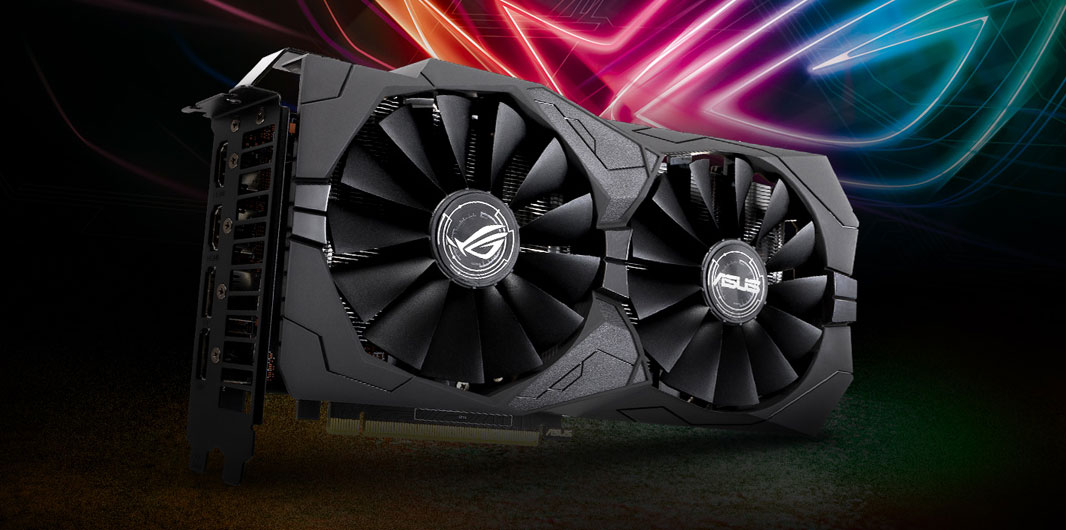
Who is GTX 1650 for?
The difficulty with budget GPUs is that they never represent something "new" in terms of performance. Yes, the GTX 1650 is faster than the previous generation GTX 1050 Ti, but it's also roughly the same performance as a high-end GPU from nearly five years ago. Now that level of performance is available from a substantially less expensive 75W TDP card (give or take), and there will eventually be low profile card models using the GTX 1650.
That's the primary draw I think, the ability for the GTX 1650 to work in pretty much any PC that has an x16 PCIe slot. It could also make sense as a cheap upgrade for an older PC, but it's not necessarily the best performance or value you can find right now.
From a pure value proposition, especially with the discounted GTX 1060 cards still hanging around along with AMD's RX 570 and 580, the GTX 1650 comes up short. Unless you have a small case that can't fit a larger card, or you have a PSU that doesn't include a 6-pin PCIe power connector, or you want/need a quiet and low power GPU, I'd point you at other alternatives. Eventually, the stock of previous generation GPUs will dry up and the GTX 1650 will remain for a couple of years as Nvidia's budget offering, but that hasn't happened yet.
The GTX 1650 isn't a bad GPU by any means. It can hit 60fps at 1080p medium to high quality in most games, and it's affordable. Just make sure you understand what you're getting, because if you're looking at building a budget gaming PC, you'll almost always be better served by spending a bit more money.
For a compact build, a quiet HTPC in the living room, or something that's only used for light to moderate gaming, the GTX 1650 is worth a look. But if you upgraded your graphics card any time in the past several years, you're probably doing just fine. And that's really what matters: Can your graphics card run the games you want to play? If it can't, it's fine to think about upgrading, but just because a card is several years old doesn't mean it needs to be replaced.
The GTX 1650 is the fastest 75W GPU around, if that's what you need, but it faces stiff competition from many other graphics cards.
Jarred's love of computers dates back to the dark ages when his dad brought home a DOS 2.3 PC and he left his C-64 behind. He eventually built his first custom PC in 1990 with a 286 12MHz, only to discover it was already woefully outdated when Wing Commander was released a few months later. He holds a BS in Computer Science from Brigham Young University and has been working as a tech journalist since 2004, writing for AnandTech, Maximum PC, and PC Gamer. From the first S3 Virge '3D decelerators' to today's GPUs, Jarred keeps up with all the latest graphics trends and is the one to ask about game performance.
